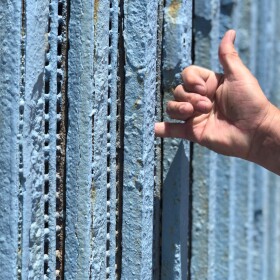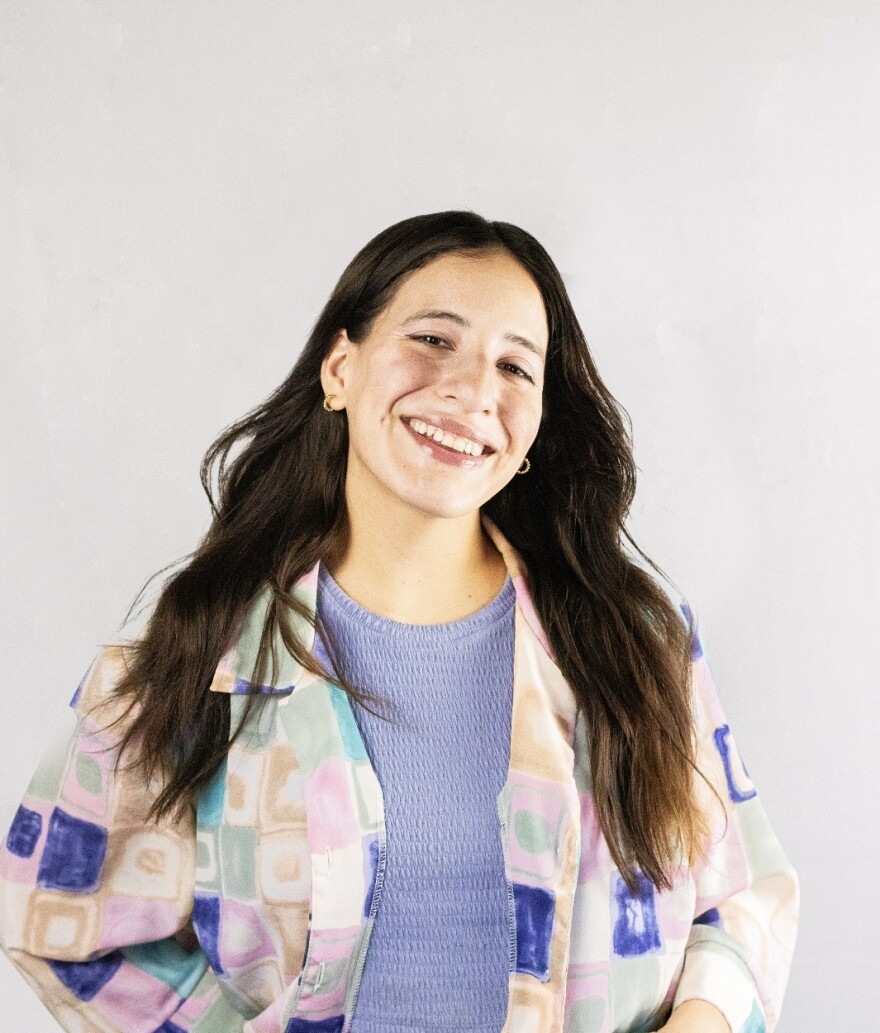Port of Entry

These are cross-border stories that connect us. Border people often inhabit this in-between place. From KPBS and California Humanities, “Port of Entry” tells personal stories from this place — stories of love, hope, struggle, and survival from border crossers, fronterizxs, and other people whose lives are shaped around the wall. Rooted in San Diego and Tijuana, we are a transborder podcast for transborder people. We live life on la linea.
Have you checked out our podcast in Spanish? If so, Take our survey.
¿Hás escuchado nuestro podcast en Español? Participa en nuestra encuesta.
Ways To Subscribe
-
Los Angeles is a giant when it comes to making movies. Here in San Diego and Tijuana, we’re stuck under the huge shadow of L.A. It’s hard to compete with Hollywood. But think about it: the border has good bones for eventually becoming a film mecca. It’s one, big, super diverse place that offers access to two really different backdrops. Plus, shooting a film in Mexico is a lot cheaper. And there’s not as much red tape when it comes to permits. Unfortunately, though, a lot of large-scale production companies only think about the border when they’re thinking about movies or TV shows about narcos and drugs. Lots of filmmakers only see the Mexico-U.S. border as a backdrop for stories about drug cartel violence. It’s become such a trope that “narco-fatigue” is a term now. Folks are exhausted by news and pop culture focused on the drug trade in Mexico. Yeah, it’s a huge issue here, but it’s just way over done. Locally, though, some filmmakers like Omar Lopex are using the border to their advantage, making movies that have nothing to do with narcos. And that trend is starting to pick up some steam thanks to efforts by local film groups that are working hard to boost filmmaking in our binational region. Today, a story about filming across borders. Only here will you find filmmakers in San Diego and Tijuana using the border as a valuable resource instead of a janky prop.
-
The Border Church, or La Iglesia Fronteriza, is not a brick-and-mortar church. In fact, the only wall here at this weekly outdoor service is the one separating the United States from Mexico. Border Church is an outdoor church that meets every Sunday on both sides of the international border fence between San Diego and Tijuana. The weekly church service is a religious celebration, but it also helps ensure that Border Patrol will continue to allow people to use this place as a meeting point. This spot, where the border wall runs into the Pacific Ocean, is where families whose immigration status doesn’t allow them to travel between the two countries can meet each other through the fence. This is the only place along the Southern California border where people can legally walk right up to the fence and touch people on the other side - just barely by poking their little fingers through holes in a steel mesh barrier, but still, it’s a touch. Today, a story about Border Church and the people who power it. Only here can you find a weekly church service that reaches people standing on both sides of the border fence. It’s a church that works to help protect access for families who want to meet through the wall.
-
Dog Crossing Part 2: In this episode, we meet Elizabeth Valenzuela who runs another DIY Baja dog rescue operation called Red Barn Rescue, plus other women who've dedicated their lives to saving animals living on the streets of Mexico. We also stop by an adoption event in San Diego where Baja Animal Sanctuary finds new homes for its rescued dogs. In the last episode, KPBS’ Kinsee Morlan and Emily Jankowski introduced you to Dana Dallabetta, an animal rescuer who saves street dogs in Rosarito and finds them new homes across the border in San Diego. If you haven’t heard that episode, you should stop and go back to give it a listen. This is part two and it picks up right where the last episode left off. Ask us questions or give us feedback by emailing us at podcasts@kpbs.org.
-
Dog Crossing Part 1: We spend a day with a hardcore dog rescuer in Rosarito. Only here will you find a community of animal lovers who’ve dedicated their lives to saving dogs in Rosarito and Tijuana by finding them homes in San Diego. This is the first in a two-part series.
-
Only here can you find entrepreneurs in San Diego and Tijuana who are working to build a bigger and better-designed cross-border region.
-
In border towns, Spanglish is everywhere. Blending Spanish with English helps the two countries communicate. It’s a natural and necessary byproduct of the border. In this episode, a story about a musician and composer who’s fallen in love with the sound of Spanglish.
-
Only here can you find a San Diego artist who dresses up as a “cleaning lady” to force a conversation about immigrant women.
-
Only here can you find a San Diego photographer whose inspiration lies in the dark, crowded punk venues of Tijuana. All music in this episode is by Tijuana punk band San Pedro El Cortez.
-
On this episode of “Only Here,” a story about a seamstress who’s trying to build community connections while building her business in Barrio Logan, a neighborhood that’s fighting to keep its Chicano culture alive.
-
Today, we hop on a bus with the Museum of Contemporary Art San Diego and take a guided tour of art and culture in Tijuana. It’s the kind of tour that shows off the cool side of the city — the kind of tour that’s kept tourism alive in a border city with a reputation for violence. It’s a story about fear, and an industry that’s blossomed from it.
Alan Lilienthal is a musician and the co-host of “Port of Entry,” a KPBS podcast about cross-border culture and the people who shape it. His life’s mission is to melt borders and celebrate our shared humanity through art.
Natalie Gonzalez is the co-host of ‘’Port of Entry” — a KPBS podcast. The podcast covers stories about cross-border people whose lives have been shaped by Tijuana and San Diego. Natalie is also a theater actress from Tijuana Hace Teatro. She studied at Universidad Iberoamericana in Tijuana where she graduated from Communications and Media School.

This project was made possible in part with support from California Humanities, a non-profit partner of the National Endowment for the Humanities. Visit calhum.org.












